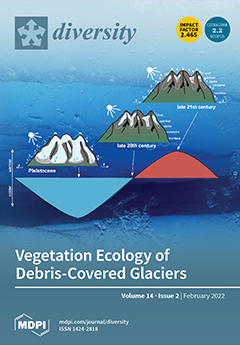Species identification for spawning corals relies heavily on morphology. Recent molecular phylogenetic approaches have demonstrated the limits of traditional coral taxonomy based solely on skeletal morphology. Merulinidae is considered a complex taxonomic group, containing 24 genera and 149 species. This family is one
[...] Read more.
Species identification for spawning corals relies heavily on morphology. Recent molecular phylogenetic approaches have demonstrated the limits of traditional coral taxonomy based solely on skeletal morphology. Merulinidae is considered a complex taxonomic group, containing 24 genera and 149 species. This family is one of the most taxonomically challenging and its taxonomy has largely improved in recent studies. However, studies of the phylogeny of Merulinidae are constrained by limited geographic scales. In Taiwan, merulinid corals are dominant in non-reefal communities on northeast coasts and they consistently spawn between summer and fall. This study is a first attempt to establish a molecular database of merulinid corals in this new area, including a volcanic island (Kueishan Island), and provide information about sexual reproduction. We analyzed 65 specimens, including 9 genera and 28 species collected from Taiwan using one mitochondrial marker (COI: cytochrome c oxidase subunit 1 gene) and three nuclear markers (ITS: nuclear ribosomal internal transcribed spacer, 28S rDNA D1 and D2, and histone H3) to re-examine phylogenetic relationships and search for new species. Overall, 58 COI sequences, 59 for ITS, 63 for 28S, and 62 histone sequences were newly obtained from the collected specimens. The reconstructed molecular tree demonstrates that all the specimens and reference sequences we examined are clustered within Merulinidae. Subclades A, B, C, D/E, F, G, H, and I are congruent with previous studies. However,
Astrea curta is separated from the other congeneric species,
Astrea annuligera (XVII-B), which is a sister to
Favites and defined as a new subclade K. In addition, two new species (
Paragoniastrea deformis and
Paragoniastrea australensis) were discovered for the first time in Taiwan, and we defined them as a new subclade J. In addition,
A. curta,
P. auastralensis, and
P. deformis are all hermaphroditic spawners and released bundles in July. This study greatly improves the accuracy of biodiversity estimates, systematic taxonomy, and reproduction for Taiwan’s coral ecosystem.
Full article





